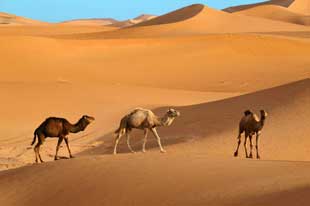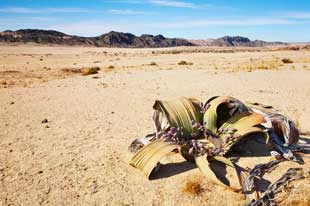Facts about Deserts
Posted by A. Douglas / in Science Facts

Camels are natural desert animals
Desert Facts
Understanding these facts about deserts may help you better understand weather patterns and the Earth's climate. Deserts are places on Earth that receive very little rainfall. Most major deserts receive less than 8 inches of rain (200 mm) each year. Compare this amount of rainfall to rainforests in South America which receive over 84 inches (2.1 meters) or 7 feet of rain per year. The extremely low amount of precipitation each year makes it very hard for plants and animals to live in a desert.
Why are deserts important? Deserts consist of large amounts of land on Earth. The largest 10 deserts in the world combine to equal about 6 million square acres (15,540,000 square kilometers) of land. Deserts certainly are impacted by weather patterns on earth. Deserts also impact the Earth's climate.
- There are many deserts located close to the equator. Moist air at the equator results in rainfall as it travels north toward cooler air. Many tropical rainforests are located near the 10 degree latitude range because of the movement of moist air away from the equator. As cooler air approaches the warmer equator, moisture in the clouds and atmosphere rise, resulting in lower amounts of rain. For these reasons, there are some large deserts located near the equator.
- There are also cold climate deserts. Some areas in Antarctica are considered deserts because these areas receive very little rain or snow. Scientists call these areas ice deserts.
- Some deserts occur in the middle latitudes. Many middle latitude deserts are a result of mountain ranges depleting the air of moisture before passing over the desert.
The Largest Deserts on Earth
- Two of the largest 5 deserts in the world are in Northern Africa. This includes the largest desert in the world, the Sahara desert, which is over 3.5 million square miles (over 9 million square km). The Libyan desert in Africa is also one of the largest in the world.
- The Arabian Desert in the Arabian Peninsula is an estimated 900,000 square miles in size (2,330,000 square kilometers).
- The largest desert in the United States is the Mojave Desert, spread out over four states. It is over 43,000 square miles in size, which is enormous, but just over 1 percent of the size of the Sahara Desert.
- The largest desert in Australia is the series of Australian deserts known as the Gibson, Great Sandy, Great Victoria, Simpson, Sturt Stony and Tonami Deserts. The total size of these Australian deserts is 600,000 square miles (1,554,000 square km).
- The largest Asian desert is the Gobi Desert with a land area of 500,000 square miles (1,295,000 square km).
Facts about Life in the Desert
- Some plants are able to survive in the desert. The cactus is able to store water in its root system and within the cactus stem. Cactus do not have leaves, instead the cactus has a spine that both help protect them from animals and help loss of water. During rainfall, cactus can absorb large amounts of water. The largest cactus can absorb hundreds of gallons of water.
- Tumbleweed is another plant that survives in desert areas. During a rain the tumbleweed is able to use enough water to grow into a green plant. The tumbleweed then separates from its roots as it dries out. The tumbleweed then rolls along the ground distributing its seeds as it goes, waiting for a future rain.
- One of the most unique plants on Earth is called the Welwitschia. This plant only lives in the Namib Desert, near the southwest coast of Africa. Scientists have estimated that some individual Welwitschia plants are over 1000 years old! The Namib Desert receives very little rainfall and in some years no rainfall at all. The Welwitschia plant is able to gather water to survive from the limited amount of fog that is present in the coastal region.
- Some reptiles are able to survive in the desert. Lizards and snakes are the most common. Reptiles hide underground during the hottest part of the day and emerge to search for food when it is not as hot. Reptiles typically live near plants in the desert to either gather food and water from the plants or the insects and animals that are attracted to the plants.
- Mammals such as camels, coyotes and kangaroos may live near the edges of a desert. In some cases, such as the camel, they can travel across parts of the desert because they can walk for miles without food and water.
- Some native people such as the Bedouins live in the Sahara desert or other deserts. They live by moving from place to place in the desert. People have also been able to inhabit desert areas with large cities. Places like Las Vegas in the Mojave Desert, Dubai in the Arabian Desert and Cairo in the Sahara Desert are all examples of how cities were built in the desert by bringing water and other resources into the area.

Scientists estimate some Welwitschia plants living in the
Namib Desert have been living for over 1000 years.
